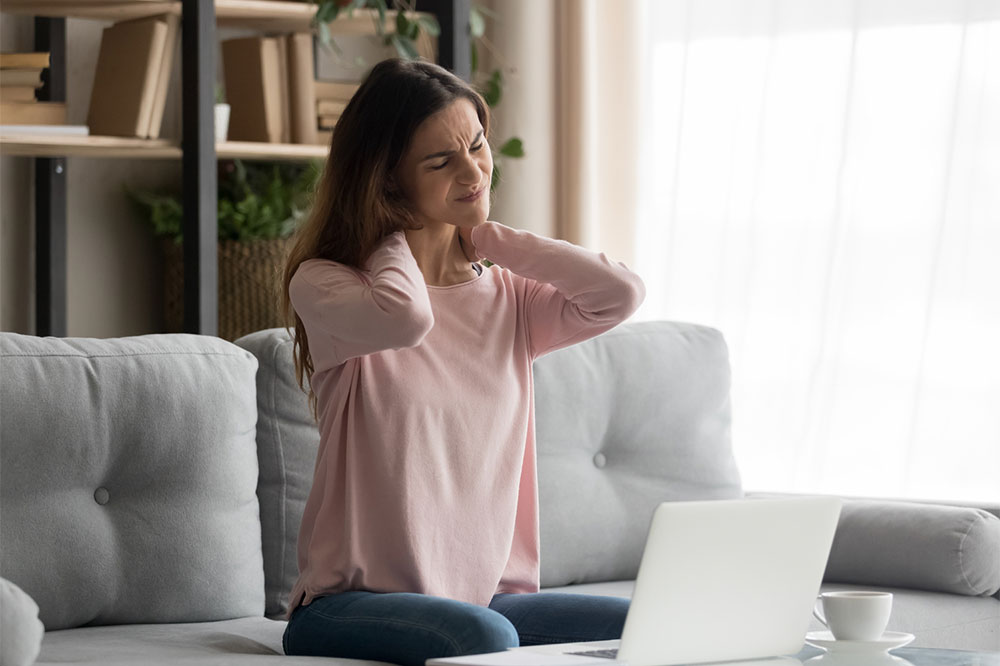Muscle Spasms – Why they Occur and How to Prevent them
Muscle spasms, or muscle cramps, are painful, involuntary contractions of a muscle. They are usually caused by over-exertion or fatigue, but there can be other causes too. In some cases, they can occur due to insufficient potassium in the body or a lack of calcium in one’s daily meals. The spasms can have mild to severe intensities. They tend to occur often during sports such as running, weight lifting, or other activities.
Why do muscle spasms occur
Muscle spasms can occur throughout the body, but they’re most common in the back, neck, legs, and arms. A muscle spasm in the back can cause pain that lasts just a few seconds or several minutes.

Minerals like potassium and magnesium help the muscles in functioning better. When the body has low amounts of these, a cramp can occur. Low levels of electrolytes can also trigger a muscle spasm. This can be due to excess sweating or a bout of vomiting. A rather unusual sign of a spasm can be kidney dysfunction. A person whose kidneys are affected may experience muscle cramps as a warning sign. It is critical to consult a doctor if a person has diabetes or kidney-related issues and experiences muscle cramps often.
When a muscle is overused or overextended, it tends to contract involuntarily (for example, from too much running). Muscle spasms or muscle cramps feel like a painful tightening in the affected area. Some people experience spasms during exercise because they haven’t warmed up properly or because their muscles aren’t getting enough oxygen-rich blood.
How long does it last
A muscle spasm typically lasts no longer than a few minutes and shouldn’t cause permanent damage to your muscles or joints. However, if your muscle cramps last longer than 15 minutes or recur frequently—especially if you feel pain when you walk—you should see your doctor immediately.
How to stop a muscle spasm
Muscle spasms feel like sudden and severe pain in one or more muscles. They usually occur during or after exercise. But they also occur without any reason. This pain is followed by stiffness and tenderness in the affected muscle(s).
Sometimes the pain will subside once it starts. Other times, it continues throughout the whole episode until it goes away on its own over time. This is why it’s essential to know a few things about muscle spasms treatment.
Resting after a spasm is important
If it’s in your leg, try taking the elevator or escalator instead of the stairs, or use a cane to walk around until the pain disappears. If you’re experiencing a muscle spasm in your back or neck, try lying down on your side with pillows between your knees or under your head so that it’s easier for you to breathe while sleeping.
Apply heat to the area
Soak in a hot tub or use warm towels on top of the area where the spasm has occurred. This helps in relaxing your muscles and relieves some of the tension that caused them to contract in the first place.
Stretch your muscles regularly throughout the day
It’s best to stretch before and after exercise. Even a few minutes of stretching can help relieve pain. Stretching makes your muscles more flexible, and you are less likely to cramp up again in the future.
Avoid triggers that cause muscle cramps
This can be different for each person. Some common triggers include certain foods or drinks like caffeine; stress; or excess high-intensity exercise. If you feel a cramp coming on, try to calm yourself down by taking deep breaths and divert your mind until it passes.
Massage the area
Massage therapy is known to be one of the best muscle spasms treatments. It helps in reducing pain and inflammation in muscles.
How can muscle spasms be prevented
If you’re suffering from excessive cramping or chronic muscle spasms, you should visit a doctor. In the meantime, listed below are some things you can do to prevent them.
Try to avoid tight clothing
Tight clothes can exert unnecessary pressure on certain areas of the body and cause cramping. If you have to wear tight clothing for reasons beyond your control, try loosening them as far as possible.
Hydrate
Drink plenty of water throughout the day. Water helps keep your muscles relaxed and prepared for any kind of movement. A few glasses of water are bound to make your muscles feel better.
Get enough sleep
Sleep helps your body recover from any hard work or stress during the day. Getting enough rest will help keep muscle cramps at bay. Muscle spasms can be a common issue for many people, especially athletes. However, they can be treated with enough rest and stretching.


